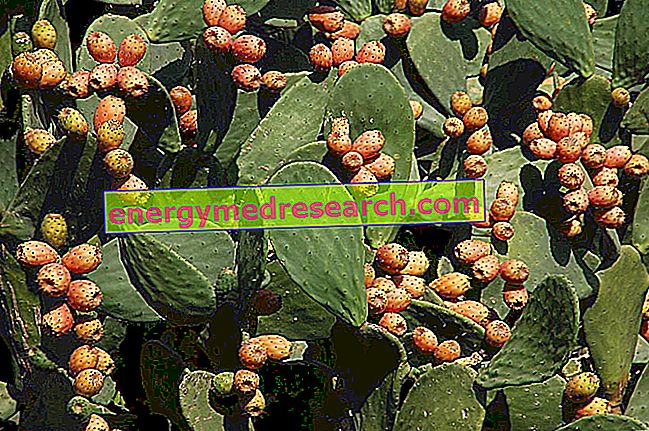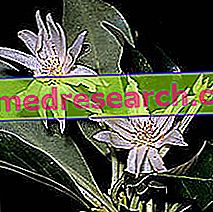Generality
Fucoxanthin is a natural molecule that has risen to the headlines due to its alleged ability to reduce excess fat, especially in the abdominal area.
It is a vegetable pigment, a carotenoid typical of brown algae which gives it its characteristic coloring, overlapping with the green shades of chlorophyll (see figure).

Lower amounts of fucoxanthin are also found in some red and green algae.
The concentration of fucoxanthin in the algae, including the brown ones, is however clearly lower than the doses used to investigate the functional characteristics of the animals.
To achieve similar quantities, it would be necessary to take these foods in doses that make them toxic, due to the large amount of iodine ingested and the consequent risk of hyperthyroidism; we must also not forget the numerous reports that algae and derivatives are subject to a real danger of arsenic contamination.
Beyond this and their content in fucoxanthin, algae are still an excellent source of iodine (which at appropriate doses is essential for stimulating thyroid activity and basal metabolism) and alginic acid (a polysaccharide that increases the density of the gastric content, stimulating the sense of satiety and acting as a mild mass laxative).
Indications
Why is fucoxanthin used? What is it for?
Although the mechanism of action of fucoxanthin is not yet fully known, recent experimental evidence suggests a particularly complex biological role.
More precisely, fucoxanthin would exercise:
- Direct antioxidant activity, acting as a scavenger of oxygen free radicals;
- An anti-inflammatory activity, effective in reducing concentrations of inflammatory cytokines such as TNF-alpha and PGE2, normally involved in the genesis of the inflammatory process;
- An anti-obesigena activity, probably linked to the ability of fucoxanthin to control the activity of upstream PPAR and thermogenins downstream.
These two proteins, also known as UCP or uncoupling proteins, are normally expressed in brown adipose tissue, a type of fat that is poorly represented in humans.
With their activity, these proteins seem to contribute to the dissipation of energy obtained from fat in the form of heat; they would therefore be the basis of an innate defense mechanism of the human body from excess fat and cold.
- An antitumor activity, observed in some preliminary studies on cell cultures, and largely related to the ability to regulate the rate of proliferation - differentiation of these clones.
Currently the main use of fucoxanthin is mainly oriented to the management of obesity.
Property and Effectiveness
What benefit has fucoxanthin shown during the studies?
The very interesting properties of fucoxanthin have not been sufficient to push researchers towards the clinical use of this molecule.
Therefore, most of the data currently available derive mainly from experimental evidence, conducted on cell lines or on small laboratory animals.
Unfortunately, to date (February 2016), we record only one clinical study, "Diabetes Obes Metab. 2010 Jan; 12 (1): 72-81." double-blind versus placebo.
In this experimental study, fucoxanthin was administered to a group of 151 obese, non-diabetic women in association with pomegranate oil, registering a weight loss of 4.9 kg over a period of 16 weeks, with significant improvements also in the blood indices of liver health.
During the study a product called Xantigen-600 was used, containing 300mg of pomegranate seed oil associated with 300mg of seaweed extract (which provides 2, 4mg of fucoxanthin).
Fucoxanthin has also been shown to increase basal metabolism in a dose dependent manner up to 8 mg.
It is important to note that these differences only materialized after 16 weeks of treatment (they were not acute), and that the minimum effective dose was 2.4 mg per day.
Pending further investigation, fucoxanthin will continue to be used as a flirtatious ingredient in many dietary supplements, ie as a substance inserted in the product not so much for its real and proven efficacy, but for the commercial appeal it has for the general public.
In the course of their experiments [1], Japanese researchers have concluded that fucoxanthin promotes the reduction of abdominal fat in genetically obese rats. In the study, the effects of fucoxanthin were investigated at dosages of 0.1% and 0.2% of the diet (which proved to be equally effective in the rat, provided that in the first case it is associated with an oil intake of fish amounting to 6.9%); this means that a human being who introduces about 1, 000 grams of food a day should proportionately take 1, 000 / 2, 000 mg of fucoxanthin / day.
In other studies, again on rats, fucoxanthin was tested at 10 times lower doses (0.02%), but still high if transferred to humans (which should be taken in doses of about 200mg / day).
If we read the average fucoxanthin content of specific dietary supplements we note that this is around 5/10 mg per tablet; while on the one hand such foresight protects the consumer from the risks of a hypothetical overdose, on the other it can be guessed how its weight loss effectiveness is at least questionable.
Doses and method of use
How to use fucoxanthin
At the moment there are no studies able to define with certainty an effective and reproducible daily fucoxanthin dosage.
From various jobs, the most frequent range of use is between 2 and 5 mg per day.
Bioavailability in humans - expressed in terms of increased plasma levels of fucoxanthin after oral intake - would be very modest. Consequently, to overcome this obstacle, the association of fucoxanthin with a dietary source of fats (generally a vegetable oil) is generally used.
At these dosages, the amount of iodine ingested would be very close to the recommended one; therefore, the simultaneous intake of foods containing iodine should be avoided.
Side effects
Although the correct use of fucoxanthin was generally well tolerated, it would be appropriate to recall the potential side effects, both metabolic and toxic, linked to the possible ingestion of foods containing fucoxanthin in large quantities.
These effects are attributable to the massive presence of iodine, which - if taken in excess - disturbs the thyroid and can cause some forms of hyperthyroidism.
Even in supplements, the substance is not always pure; more often we use extracts of Undaria pinnatifida titrated to 10% in fucoxanthin, in which there is also a not insignificant percentage of iodine.
Therefore, the choice of the appropriate integrator, in terms of product quality and purification, constitutes a key element of the success and tolerability of the supplementary protocol.
When should fucoxanthin not be used?
The use of fucoxanthin is contraindicated in case of hypersensitivity to the substance and contextual thyroid pathologies.
Pharmacological Interactions
Which drugs or foods can modify the effect of fucoxanthin?
The metabolic action of fucoxanthin exposes this molecule to noteworthy drug interactions.
More precisely:
- The use of contextual cholestyramine, colestipol, mineral oils, orlistat and pectin could reduce the intestinal absorption of fucoxanthin;
- The intake of beta carotene, vegetable and animal oils and medium chain triglycerides could instead increase the intestinal absorption of fucoxanthin.
Precautions for use
What do you need to know before taking fucoxanthin?
The use of fucoxanthin during pregnancy and subsequent breastfeeding, as well as in children, should be avoided.
Close medical supervision, during the use of fucoxanthin, would instead be necessary in patients suffering from diseases of various kinds or subjected to simultaneous drug therapy.
The use of foods containing fucoxanthin, could bring large quantities of iodine, with possible metabolic consequences.



